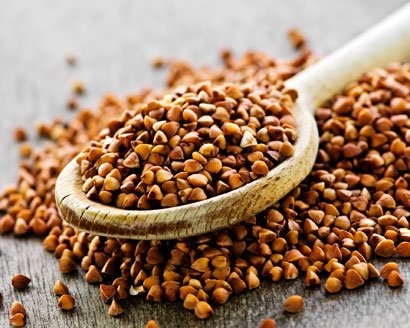What Is Gluten-Free?
If you're one of more than 2 million Americans suffering from celiac disease, you and your physician are probably considering a gluten-free diet as a treatment. According to the National Institutes of Health, people who switch to a gluten-free diet typically start to experience positive changes within a few days, but make no mistake: For most people, a gluten-free diet is a lifelong commitment.
Celiac disease is an autoimmune genetic disorder that affects the ability of the digestive system to absorb nutrients and digest gluten, a protein found in wheat, rye, and barley.
Wheat is especially tricky to avoid because it's turned into so many different products that don't sound like they come from wheat, including bulgur, emmer, graham flour, kamut, and spelt. Others are more obvious — for example: durum flour, enriched flour, farina, plain flour, self-rising flour, semolina, and white flour.
So we've pulled together information from the Mayo Clinic as well as the National Institutes of Health to make a list of foods that are OK for those with celiac disease, those that are questionable but may have gluten-free versions, and those that are definitely not OK, but some of which have readily available gluten-free versions. This list is not meant to be exhaustive, but covers some of the most common products you'll likely encounter at the store. Notably, contrary to popular belief, it is acceptable for people following a gluten-free diet to consume rice, as well as corn, legumes, and potatoes (in fact, any unprocessed vegetable is fine). Oatmeal is also notable; it was on the "Don't Touch" list for a while, but is now starting to make a comeback — check to see if the manufacturer follows good separation practices to keep the product from getting contaminated by wheat, rye, or barley.
| Good to Go | Iffy | Don't Touch |
|---|---|---|
| Amaranth | Bouillon cubes | Barley, including malt |
| Arrowroot | Candy | Beer* |
| Buckwheat | Chips | Bread* |
| Eggs | Cold cuts | Cakes and pies* |
| Fish | Hot dogs | Cereal* |
| Flax | Sausage | Cookies* |
| Fruits | French fries | Crackers* |
| Gluten-free flour such as rice, soy, corn, potato, or bean flour | Gravy | Croutons* |
| Meat | Imitation fish | Pasta* |
| Millet | Matzo | Pizza* |
| Nuts | Oatmeal | Rye |
| Poultry | Rice mixes | Triticale (Wheat+Rye) |
| Quinoa | Sauces | Wheat |
| Rice | Soups | |
| Seeds | Soy sauce | |
| Sorghum | ||
| Soy | ||
| Tapioca | ||
| Teff | ||
| Vegetables |
*Unless gluten-free
Gluten also shows up in a number of products (not necessarily food) that you may find surprising. For example, some medicines, vitamins, and lip balms contain gluten.
Discipline is crucial to making sure that you stay symptom-free. One of the reasons a gluten-free diet doesn't work for some people is that they still eat minute amounts of gluten, usually inadvertently, from food additives or products that have been cross-contaminated with gluten.
As always, before making any changes to your diet, you should consult the advice of qualified health care practitioners, including your physician and dietitian. Creating a gluten-free diet is a collaborative process that should involve close and constant contact with your dietitian, who can tailor specific recommendations to your lifestyle and dietary needs.
Click here to see Gluten-Free Recipes That Actually Taste Good
Will Budiaman is the Recipe Editor at The Daily Meal. Follow him on Twitter @WillBudiaman.
